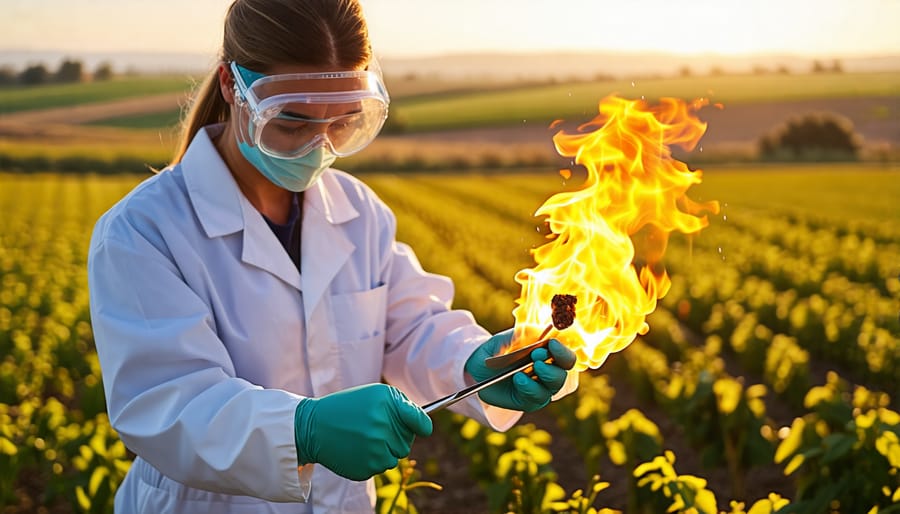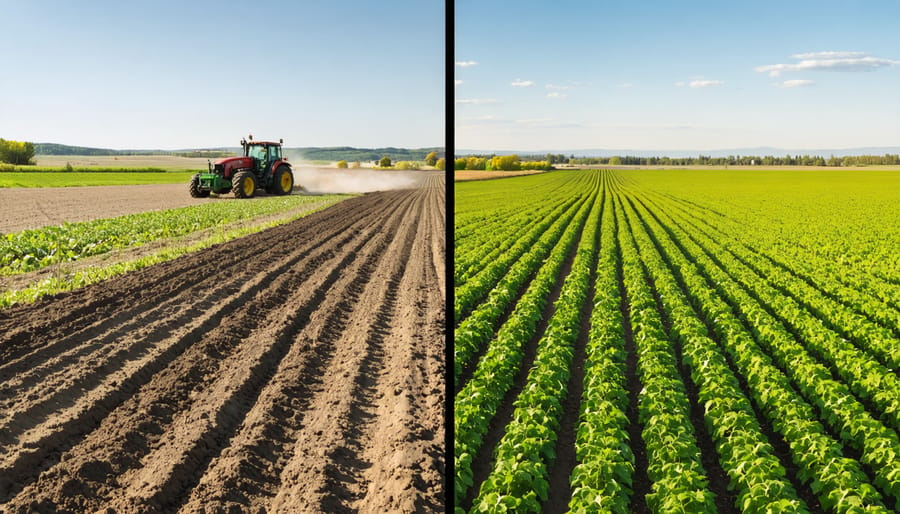Conduct simple solubility tests to identify organic compounds. Most are insoluble in water but dissolve in organic solvents like ethanol or acetone. Perform a flame test by holding a small sample in a flame; many organics burn with a sooty flame due to high carbon content. Apply the Beilstein test by heating the sample on a copper wire, then exposing it to a flame. A green color indicates the presence of halogens, common in synthetic organics. Consult field guides or contact experts in agriculture and environmental science to confirm your findings. By combining these practical tests with professional knowledge, you can reliably determine if an unknown substance is likely organic in nature.
The Flame Test
Many organic compounds burn with a yellowish, sooty flame due to their carbon content. To safely test an unknown substance in the field, you’ll need a flame source like a butane lighter or propane torch, and tweezers or tongs to hold the sample. First, scoop a pea-sized amount of the material onto a non-flammable surface. Using the tweezers, hold the sample in the flame for 10-15 seconds and observe: – Substances that melt or vaporize before igniting are likely organic. – Compounds that burn with a yellow, smoking flame often contain carbon. – Materials leaving fluffy grey/black ash are typically organic. – Those burning with a clean blue flame or leaving white ash are probably not organic. Always conduct flame tests outdoors away from flammable materials. Wear gloves and eye protection. Don’t directly breathe smoke or fumes. Avoid testing plastics which may release hazardous vapors. Safely extinguish any remaining flames and dispose of ash and debris. While not definitive, this simple procedure provides clues to help identify organic substances when other analysis methods aren’t practical in the field. Coupled with other observations, the flame test is a handy technique for the toolbox of farmers and ag professionals.
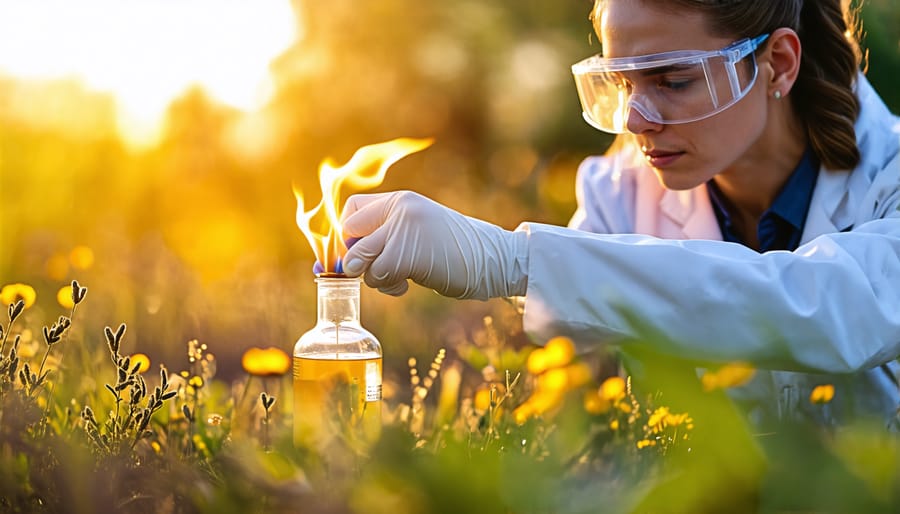
Solubility in Water
Many organic compounds are insoluble or only slightly soluble in water due to their non-polar nature. This property can be used as a simple test to determine if an unknown substance is likely an organic compound. Here’s how you can conduct a basic water solubility test in the field: 1. Place a small amount of the unknown substance (about 1/4 tsp or 1 ml) into a clear glass jar or beaker. 2. Add about 1/2 cup (120 ml) of water to the container. 3. Secure the lid tightly and shake the mixture vigorously for 30 seconds. 4. Allow the mixture to settle for 1-2 minutes and observe the results. If the substance does not dissolve and remains separated from the water, floating on top or sinking to the bottom, it is likely an organic compound. If it dissolves completely and forms a homogenous solution, it is probably not organic. Keep in mind that this is a general rule of thumb and there are exceptions. Some organic compounds, like alcohols and acids, are more water-soluble due to their polarity. Conversely, a few inorganic substances may not readily dissolve. However, this simple test can provide a good starting point for identifying potential organic compounds in an agricultural setting.
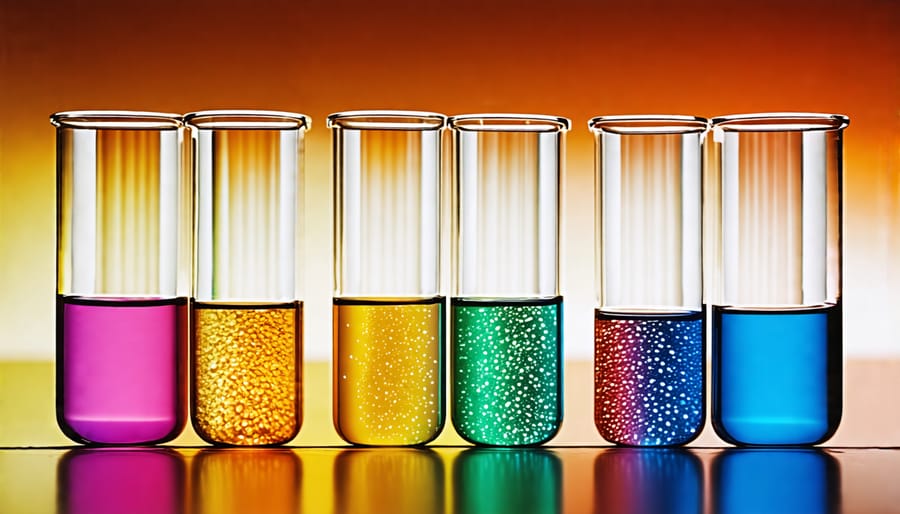
Solubility in Organic Solvents
When determining the solubility of an organic compound, it’s essential to consider the solvent being used. Organic compounds are generally more soluble in organic solvents like acetone compared to water. This is because organic solvents have similar intermolecular forces and polarity to the organic compounds, allowing them to mix more easily. Water, being a polar solvent, often has difficulty dissolving nonpolar organic substances. To test the solubility of an organic compound in an organic solvent, you can perform a simple experiment. Start by placing a small amount of the compound in a test tube. Then, add a few milliliters of the organic solvent, such as acetone. Gently swirl or stir the mixture and observe whether the compound dissolves. If it dissolves completely, forming a homogeneous solution, it indicates good solubility in that solvent. However, if the compound remains undissolved or forms a separate layer, it suggests poor solubility. It’s important to conduct solubility tests in a well-ventilated area and wear appropriate personal protective equipment, as organic solvents can be volatile and flammable. When comparing solubility results, keep in mind that factors like temperature and pressure can also influence solubility. By understanding the solubility behavior of organic compounds in different solvents, you can make informed decisions about their use and handling in various applications.
Ignition Test
Organic compounds usually contain carbon-hydrogen bonds that readily burn when ignited. These compounds, such as oils, sugars, and alcohols, will typically catch fire and continue burning if lit with a flame. In contrast, many inorganic substances like water, sand, or table salt won’t ignite or sustain a flame. To perform an ignition test, start by placing a small amount of the unknown substance on a heat-safe surface, like a metal spoon or ceramic dish. Using a lighter or match, attempt to ignite the sample. If it catches fire and continues to burn, it’s likely an organic compound. Make sure to conduct this test in a well-ventilated area away from flammable materials, and wear protective gloves and eyewear. Keep in mind that some inorganic compounds, such as magnesium or sulfur, can also burn. However, the ignition test remains a useful tool for initially distinguishing between organic and inorganic substances in the field. When in doubt, it’s always best to send a sample to a lab for more precise analysis.
Electrical Conductivity
In contrast to many inorganic ionic compounds, organic compounds typically act as poor conductors of electricity when dissolved in water. This is because organic molecules are usually held together by covalent bonds, which do not readily allow for the flow of electrical current. Unlike ionic compounds that dissociate into charged particles (ions) in water, organic compounds maintain their molecular structure and do not create a conductive solution. However, there are some exceptions, such as organic acids and bases that can partially ionize in water, allowing for limited electrical conductivity. Nevertheless, the vast majority of organic compounds remain non-conductive in aqueous solutions.
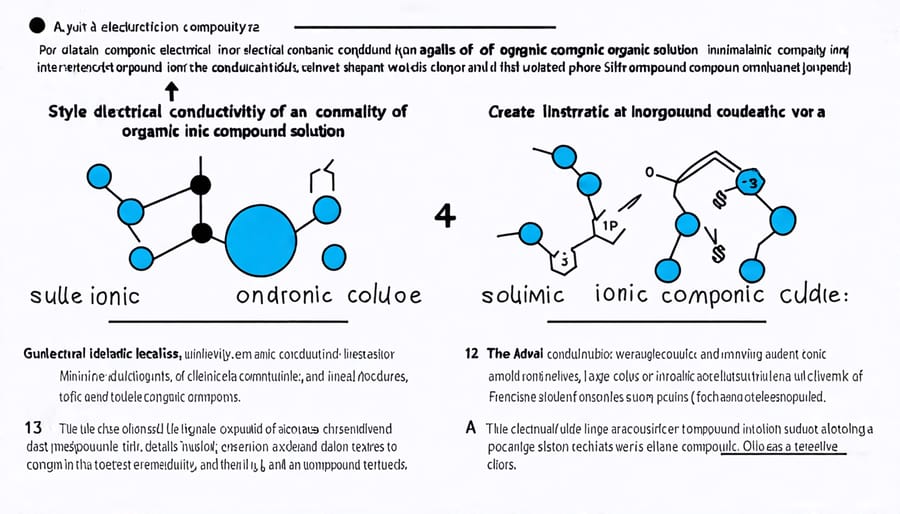
Conclusion
In conclusion, understanding how to identify organic compounds through simple field tests is a valuable skill for anyone working in agriculture or environmental science. Being able to quickly determine if an unknown substance is likely organic can inform decisions about soil management, pest control, and overall organic farming practices. The ignition, solubility, and pH tests covered in this article are practical methods you can implement right away. With a bit of practice, you’ll gain confidence in your ability to recognize organic materials and leverage that knowledge to optimize your growing systems. As you continue expanding your expertise, share these techniques with others in your agricultural community to collectively enhance sustainable land stewardship across the Alberta region and beyond.

